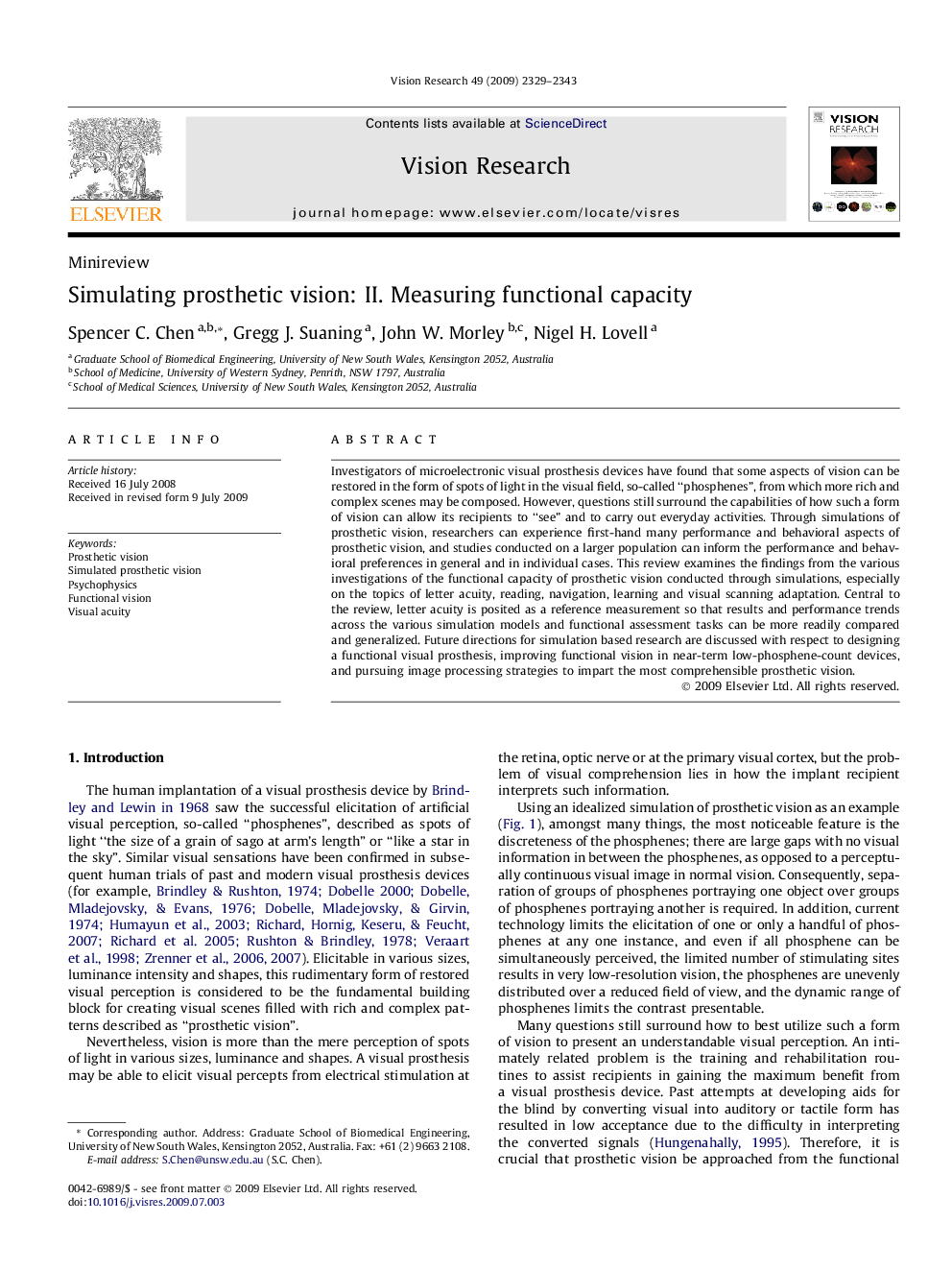| Article ID | Journal | Published Year | Pages | File Type |
|---|---|---|---|---|
| 4034656 | Vision Research | 2009 | 15 Pages |
Investigators of microelectronic visual prosthesis devices have found that some aspects of vision can be restored in the form of spots of light in the visual field, so-called “phosphenes”, from which more rich and complex scenes may be composed. However, questions still surround the capabilities of how such a form of vision can allow its recipients to “see” and to carry out everyday activities. Through simulations of prosthetic vision, researchers can experience first-hand many performance and behavioral aspects of prosthetic vision, and studies conducted on a larger population can inform the performance and behavioral preferences in general and in individual cases. This review examines the findings from the various investigations of the functional capacity of prosthetic vision conducted through simulations, especially on the topics of letter acuity, reading, navigation, learning and visual scanning adaptation. Central to the review, letter acuity is posited as a reference measurement so that results and performance trends across the various simulation models and functional assessment tasks can be more readily compared and generalized. Future directions for simulation based research are discussed with respect to designing a functional visual prosthesis, improving functional vision in near-term low-phosphene-count devices, and pursuing image processing strategies to impart the most comprehensible prosthetic vision.
